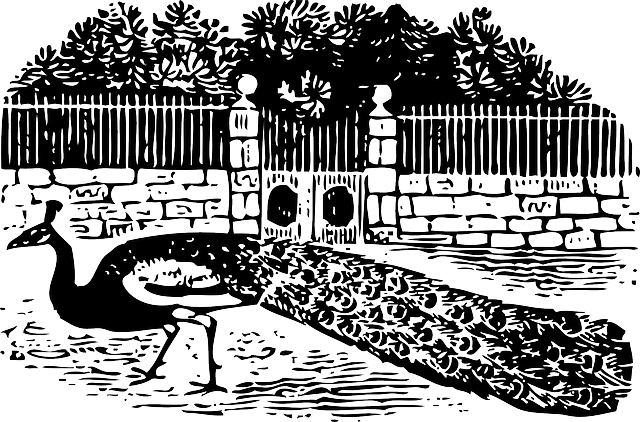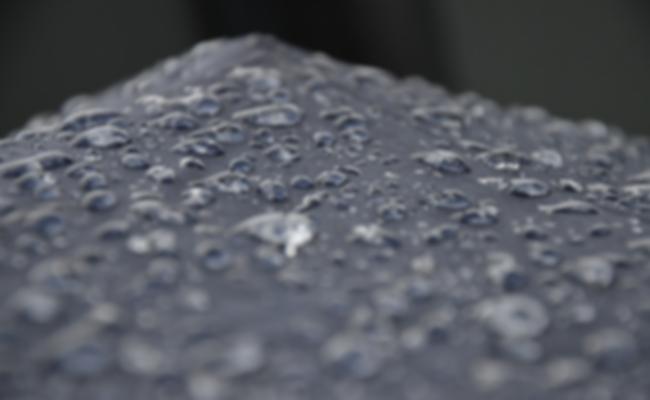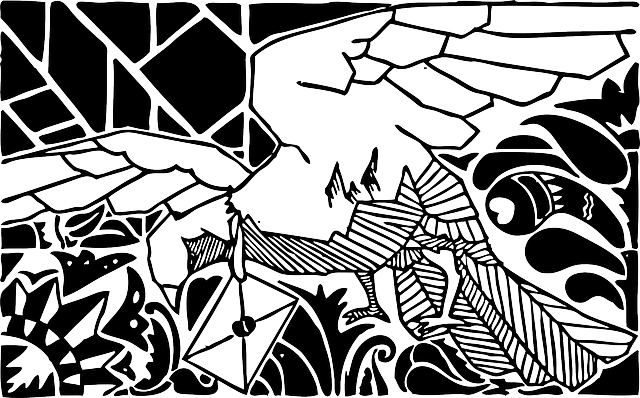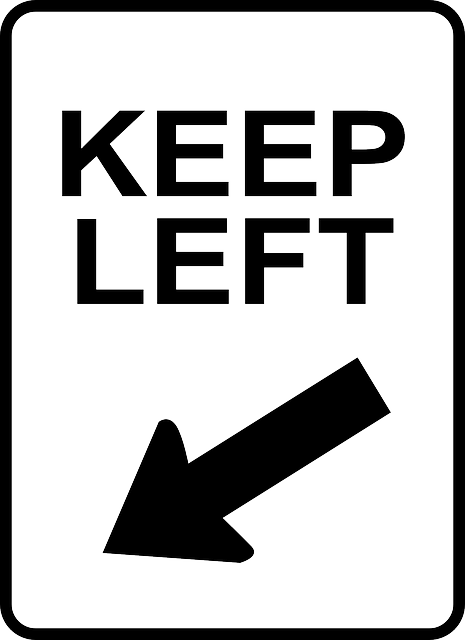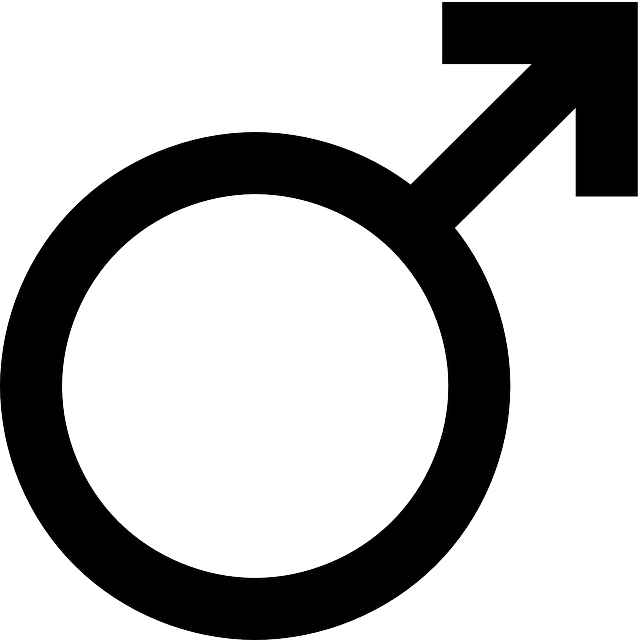تاريخ الترانزستور
إختراع الترانسستور
أول براءة إختصارا ترانسستور التأثير-الحقلى أوفيلد-إفيكت ترانسستور المبدأ قد أودع في كندا من قبل الفيزيائي النمساوي المجري جوليوس إدجار ليلينفيلد في أكتوبر 22, 1925, لكن ليلينفيلد لم ينشر أى منطقات أوبحوث عن حهازه, وكان قد تم تجاهلها من قبل الصناعة. في عام 1934 الفيزيائي الألماني الدكتور. أوسكار هايلحصل على براءة اختراع آخرى عن ترانسستور التأثير-الحقلىfield-effect transistor . ليس هناك أي مرشد مباشر حتى هذه الأجهزة قد تم بناؤها, ولكن في وقت لاحق في 1990 تبين حتى واحدا من تصاميم ليلينفيلد قد عملت على النحوالمبين وتكبيرا مناسبا تكبير. الأوراق القانونية من مختبرات بيل تبين حتى البراءة التى تخص ويليام شوكلي والفريق العامل بمختبرات بيل, جيرالد بيرسون , وكان قد بنى نسخة قابلة للتطبيق من براءات الاختراع ليلينفيلد , ومع ذلك فإنها لم المشار إليها هذا العمل مطلقا في أي من أبحاثهم في وقت لاحق أوالمواد التاريخية.
أعمال خرجت من الحرب جهود الوقت لإنتاج"كريستال" جرمانيوم مخلوط نقي للغاية الصمام الثنائي ، المستخدمة في رادار وحدات بوصفها خلاط تردد عنصر في مستقبلات الرادار الميكروويف . وهناك مشروع مواز على الجرمانيوم الصمام الثنائي في جامعة بوردونجحت في انتاج نوعية جيدة الجرمانيوم - بلورات شبه موصلة التي تم استخدامها في مختبرات بيل.
التكنولوجيا المستندة إلى الأنابيب المفرغة, لم تقم بعملية التبديل(switching) بطريقة كافية, مما دفع فريق بيل لإستخدام الحالة الصلبة الصمام الثنائىبدلا من الأنابيب المفرغة. وبوضع هذه الفهم في الحسبان, فقد تحولوا إلى تصميم الصمام الثلاثى, ولكن عثر حتى هذا لم يكن من السهل على الإطلاق وطور باردين في نهاية المطاف فرعا جديدا في فيزياء السطح لحساب أبعاد السلوك الغريب, الذى لاحظوه وأفلح أخيرا باردين وبراتين في نهاية المطاف نجحوا في بناء جهاز العمل .
بعد الحرب ،قرر ويليام شوكلي محاولة بناء الصمام الثلاثي مثل أجهزة أشباه الموصلات. حصل على التمويل ، ومعمل فضاء ، ومضى للعمل مع براتين وجون باردين لسبر غور هذا الأمر.
المفتاح لتطوير الترانزستور هومزيد من الفهم للعملية الحركة الإلكترونية في أشباه الموصلات. فقد استوعب أنه إذا كان هناك سبيل للسيطرة على تدفق الالكترونات من الباعث إلى المجمع من هذا الصمام الثنائي المكتشفة حديثا ، يمكن للمرء حتى نبني مكبرا أومضخما للتيار. على سبيل المثال ، إذا كنت قد وضعت على جانبي اتصالات من نوع واحد من الكريستال الحالية لن تتدفق عبره. ولكن إذا كان على اتصال ثالث يمكن عندئذ "حقن" الالكترونات أوالثقوب في المادة ، فإن من شأن التيار حتى يتدفق حينئذ.
عملا القيام بذلك على ما يظهر في غاية الصعوبة. إذا كانت الكريستال ، من أي حجم معقول, فإن عدد الإليكترونات أو ( الفجوات) المطلوب حقنها يجب حتى تكون كبيرة جدا -– مما يجعلها أقل من المفيد بوصفها [[مضخم لأن ذلك يحتاج ضخ تيار كبير الكم للبدأ. مع ذلك ، فإن الفكرة كلها حتى الصمام الثنائي المصنوع من الكريستال هوحتى الكريستال في حد ذاته يمكن حتى توفر الإلكترونات على مسافة صغيرة جدا ، في منطقة النضوب الرئيسية على ما يظهر لوضع الإدخال والإخراج. المفتاح على ما يبدوهووضع وصلات الإدخال والأخراج متقاربين جدا معا على سطح البلورة على جميع من جانبي هذه المنطقة.
براتين بدأ العمل على بناء مثل هذا الجهاز ، وبدأت تظهر تلميحات محيرةعن التضخيم المستمر حدثا عمل الفريق على حل هذه المشكلة.. في بعض الأحيان يفترض أن يعمل النظام ولكن بعد ذلك يفترض أن يتوقف عن العمل بشكل غير متسقط. في حالة واحدة فإن نظاما غير عامل بدأ عندما وضعت الأداة في المياه. الالكترونات في أي بترة واحدة من الكريستال من شأنها حتى تهاجر بسبب الشحنات القريبة . الالكترونات في بواعث (Emitters) أو"الفجوات" في المجمعات(Collectors), من شأنها حتى تتكتل على سطح البلورةحيث يمكنها العثور على الشحنة المعاكسة لها"تسبح فوقها" في الهواء(أوالماء). ومع ذلك فإنها يمكن حتى تكون قد دفعت بعيدا عن السطح مع تطبيق شحنة ضئيلة من أي مسقط آخر على الكريستال. بدلا من حتى بحاجة إلى كميات كبيرة من حقن الإلكترونات ، وهوعدد صغير جدا في المكان المناسب على الكريستال من شأنه حتى يحقق نفس الشىء.
فهمهم حل معضلة بحاجة إلى السيطرة على منطقة صغيرة جدا إلى حد ما. بدلا من حتى بحاجة إلى اثنين من أشباه الموصلات ترتبط بمنطقة مشهجرة ولكن ضئيلة الحجم, فأن جزءا كبيرا من السطح يفترض أن يفى بما هومطلوب. ويفترض أن يؤدى المجمع والباعث على حد سواء وضعهما قريبة جدا معا على أعلى , with the control lead placed on the base of the crystal. When current was applied to the "base" lead, the electrons or holes would be pushed out, across the block of semiconductor, and collect on the far surface. As long as the emitter and collector were very close together, this should allow enough electrons or holes between them to allow conduction to start.
An early witness of the phenomenon was Ralph Bray, a young graduate student. He joined the germanium effort at Purdue University in November 1943 and was given the tricky task of measuring the spreading resistance at the metal-semiconductor contact. Bray found a great many anomalies, such as internal high-resistivity barriers in some samples of germanium. The most curious phenomenon was the exceptionally low resistance observed when voltage pulses were applied. This effect remained a mystery because nobody realised, until 1948, that Bray had observed minority carrier injection - the effect that was identified at Bell Labs and made the transistor a reality.
Bray wrote: "That was the one aspect that we missed, but even had we understood the idea of minority carrier injection...we would have said, 'Oh, this explains our effects.' We might not necessarily have gone ahead and said, 'Let's start making transistors', open up a factory and sell them... At that time the important device was the high back voltage rectifier".
أول ترانسستور يظهر
فريق بيل بذل محاولات كثيرة لبناء مثل هذا النظام بأدوات مختلفة ، ولكن عموما فشلت جهودهم. فالتجهيزات حيث مواضع الإتصال كانت دائما قريبة بما فيه الكفاية هشة بقدر cat's مجسات whisker , الذي كان قد كشف عن الخط الطولي ، وسوف تعمل لفترة وجيزة ، على جميع حال. في نهاية المطاف إنهم على شفا إنقلاب فهمى خطير. بترة من الرقائق المضىية تم لصقها على حافة اسفين من البلاستيك ، ومن ثم تم جعلها شرائح بشفرة حلاقة على طرف المثلث. وكانت النتيجة متقاربة جدا اثنين من الاتصالات من المضى. عندما تم دفع بلاستيكية أسفل على سطح البلورة وتم إحداث فرقا للجهد أوإمرار تيار على الجانب الآخر (على قاعدة الكريستال) ، وبدأ التيار في التدفق من نقطة إتصال إلى الأخرى حسب جهد القاعدة الذى دفع الإلكترونات بعيدا عن القاعدة نحو الجانب الآخر بالقرب من الوصلات. في ترانسستور نقطة-الإتصال كان قد تم إبتكاره فى 15 ديسمبر 1947, "وعندما كانت النقاط, متقاربة جدا معا تم الحصول على فارق جهد حوالى 2 لكن لم يحدث تكبير للتيار . هذا التضخيم لحهد الكهرباءالذى كان مستقلا عن تردد منعشرة إلى 10,000 سيكل".
فى 16 ديسمبر 1947, "بإستخدام نقطة الإتصال تلك المزدوجة النقاط, فإن إتصالا قد تم على سطح الجرمانيوم الذى جعل متصلا بالآنودإلى 90 فولتا, فقد تم غسل الإليكتروليت في H2O ووكانت بعض النقاط المضىية, كانت قد تمت تبخرتها فوق النقطة. والوصلات المضىية ضغطت إلى أسفل على أسطح عارية. وكانت كلا الوصلات المضىية, قد تم تسليمها إلى السطح بلطف . وكانت الفروق بين نقاط الإتصال حوالى 4x10-3 سم. نقطة واحدة كانت تستخدم كقاعدة للشبكة والنقطة الأخرى باعتبارها صفيحة. The bias (D.C.) on the grid had to be positive to get amplification... power gain 1.3 voltage gain 15 on a plate bias of about 15 volts".
Brattain and H. R. Moore made a demonstration to several of their colleagues and managers at Bell Labs on the afternoon of 23 December 1947, often given as the birth date of the transistor. The "PNP point-contact germanium transistor" operated as a speech amplifier with a power gain of 18 in that trial. In 1956 John Bardeen, Walter Houser Brattain, and William Bradford Shockley were honored with the جائزة نوبل في الفيزياء "for their researches on semiconductors and their discovery of the transistor effect".
12 people are mentioned as directly involved in the invention of the transistor in the Bell Laboratory.
At the same time some European scientists were led by the idea of solid-state amplifiers. In August 1948 German physicists Herbert F. Mataré (1912– ) and Heinrich Welker (1912–1981), working at Compagnie des Freins et Signaux Westinghouse in Aulnay-sous-Bois, فرنسا applied for a patent on an amplifier based on the minority carrier injection process which they called the "transistron". Since Bell Labs did not make a public announcement of the transistor until June 1948, the transistron was considered to be independently developed. Mataré had first observed transconductance effects during the manufacture of germanium diodes for German radar equipment during WWII. Transistrons were commercially manufactured for the French telephone company and military, and in 1953 a solid-state radio receiver with four transistrons was demonstrated at the Düsseldorf Radio Fair.
أصل الإسم
مختبرات بيل للتليفون كانت بحاجة إلى إسم تجارى,لإختراعها الجديد : "شبه موصل صمام ثلاثى", "صمام ثلاثى صلب", "صمام ثلاثى الحالة السطحية", "صمام ثلاثى بلورى" و"أيوتاترون" أعتبرت كلها , ولكن "ترانسستور," أقترحه جون.ر.بايرس, وفاز في اقتراع داخلي. الأساس المنطقي للإسم هومشروح في المقتطف التالي من الشركة التقنية في مذكرة للحصول على اصوات:
الترانزستور. هذا هوخليط اختصارا للعبارة "transconductance" وتعنى "نقل" ، و"varistor". وتعنى التصنيف الذى ينتمى إليه الجهاز varistor ، ويحتوي على transconductance أونقل للمقاومة وجود جهاز الكسب ، ويعد هذا الخليط وصفيا
— مختبرات بيل للتليفون -- مذكرة تقنية (28 مايو1948)
بيرس أشار إلى تسمية مختلفة إلى حد ما:
السبيل التى قدمت الإسم عن طريقها, هوحتى نفكر ماذا ستعمل الأداة.وفي ذلك الوقت, فإنه قد أفترض حتىقد يكون عمله مزدوجا لعمل الأنابيب المفرغة , .الأنابيب المفرغة لديها transconductance,أو(نقل الموصلية) وكذلك سيكون الترانسستور 'transresistance.' والإسم يفترض أن يتلاءم مع أسماء الأجهزة الأخرى, مثل varistor وthermistor. و. . . أنا إقترحت الإسم 'ترانسستور.'
— جون.ر.بايرس, لقاءات معPBS show "Transistorized!"
مؤسسة نوبل تنص على حتى المصطلح هومزيج من تعبير "نقل" و"المقاوم" -- Nobelprize.org - The Transistor
Production and commercialization
By 1953, the transistor was being used in some products, such as hearing aids and telephone exchanges, but there were still significant issues preventing its broader application, such as sensitivity to moisture and the fragility of the wires attached to germanium crystals.Donald G. Fink, Philco's director of research, summarized the status of the transistor's commercial potential with an analogy: "Is it a pimpled adolescent, now awkward, but promising future vigor? Or has it arrived at maturity, full of languor, surrounded by disappointments?"
Transistor radios
Bell immediately put the point-contact transistor into limited production at Western Electric in Allentown, Pennsylvania. Prototypes of all-transistor AM radio receivers were demonstrated, but were really only laboratory curiosities. However, in 1950 Shockley developed a radically different type of solid-state amplifier which became known as the Bipolar Junction "transistor". Although it works on a completely different principle to the point-contact "transistor", this is the device which is most commonly referred to as a "transistor" today. Morgan Sparks made the bipolar junction transistor into a practical device. These were also licensed to a number of other electronics companies, including Texas Instruments, who produced a limited run of transistor radios as a sales tool. Early transistors were chemically unstable and only suitable for low-power, low-frequency applications, but as transistor design developed, these problems were slowly overcome.
There are numerous claimants to the title of the first company to produce practical transistor radios. Texas Instruments had demonstrated all-transistor AM radios as early as 1952, but their performance was well below that of equivalent battery tube models. A workable all-transistor radio was demonstrated in August 1953 at the Düsseldorf Radio Fair by the German firm Intermetall. It was built with four of Intermetall's hand-made transistors, based upon the 1948 invention of Herbert Mataré and Heinrich Welker. However, as with the early Texas units (and others) only prototypes were ever built; it was never put into commercial production.
The production of the first commercially successful transistor radio is often incorrectly attributed to Sony (originally Tokyo Tsushin Kogyo). However the Regency TR-1, made by the Regency Division of I.D.E.A. (Industrial Development Engineering Associates) of Indianapolis, Indiana, was the first practical transistor radio made in any significant numbers. The TR-1 was announced on October 18, 1954 and put on sale in November 1954 for $49.95 (the equivalent of about $361 in year-2005 dollars) and sold about 150,000 units.
The TR-1 used four Texas NPN transistors and had to be powered by a 22.5 Volt battery, since the only way to get adequate radio frequency performance out of early transistors was to run them close to their collector-to-emitter breakdown voltage. This made the TR-1 very expensive to run, and it was far more popular for its novelty or status value that its actual performance, rather in the fashion of the first MP3 players.
Still, aside from its indifferent performance, the TR-1 was a very advanced product for its time, using printed circuit boards, and what were then considered micro-miniature components.
Masaru Ibuka, co-founder of the Japanese firm Sony, was visiting the USA when Bell Labs announced the availability of manufacturing licenses, including detailed instructions on how to manufacture junction transistors. Ibuka obtained special permission from the Japanese Ministry of Finance to pay the $50,000 license fee, and in 1955 the company introduced their own five-transistor "pocket" radio, the TR-55, under the new brand name Sony. (The term "pocket" was a matter of some interpretation, as Sony allegedly had special shirts made with oversized pockets for their salesmen) This product was soon followed by more ambitious designs, but it is generally regarded as marking the commencement of Sony's growth into a manufacturing superpower.
The TR-55 was quite similar to the Regency TR-1 in many ways, being powered by the same sort of 22.5Volt battery, and was not much more practical. Very few were sold in the USA. It was not until 1957 that Sony produced their ground-breaking "TR-7" 7-transistor portable, a much more advanced design that ran on three ordinary flashlight cells and could compete favorably with vacuum tube portables. However, by this time similar designs were being produced in most industrialized countries.
Computers
The world’s first transistor computer was built at the University of Manchester. The computer was built by Dick Grimsdale, then a research student in the Department of Electrical Engineering and now a Professor of Electronic Engineering at Sussex University.
The machine used point-contact transistors, made in small quantities by STC and Mullard. These consisted of a single crystal of germanium with two fine wires, resembling the crystal and cat’s whisker of the 1920’s. These transistors had the useful property that a single transistor could possess two stable states. The memory was a magnetic drum, a cylindrical version of today’s hard disk drives. The arithmetic and control registers were on the drum, in the form of delay lines with reading heads displaced a short distance from the writing heads around the circumference. The development of the machine was severely hampered by the unreliability of the transistors, which consumed 150 watts.
Improvements in transistor design
Shockley was upset about the device being credited to Brattain and Bardeen, whom he felt had built it "behind his back" to take the glory. Matters became worse when Bell Labs lawyers found that some of Shockley's own writings on the transistor were close enough to those of an earlier 1925 patent by Julius Edgar Lilienfeld that they thought it best that his name be left off the patent application.
Shockley was incensed, and decided to demonstrate who was the real brains of the operation. Only a few months later he invented an entirely new type of transistor with a layer or 'sandwich' structure. This new form was considerably more robust than the fragile point-contact system, and would go on to be used for the vast majority of all transistors into the 1960s. It would evolve into the bipolar junction transistor.
The spacistor was a type of transistor developed in the 1950s as an improvement over the point-contact transistor and the later alloy junction transistor, Grown Junction transistor (1951) then the surface barrier transistor... diffusion transistor, , mesa transistor (Fairchild 1957), tetrode transistor, pentode transistor, Etc...
With the fragility problems solved, a remaining problem was purity. Making germanium of the required purity was proving to be a serious problem, and limited the number of transistors that actually worked from a given batch of material. Germanium's sensitivity to temperature also limited its usefulness. Scientists theorized that silicon would be easier to fabricate, but few bothered to investigate this possibility. Morris Tanenbaum et al. at Bell Laboratories(Jl. of Applied Physics,26,686-692,1955) were the first to develop a working silicon transistor in January 1954. A few months later, Gorden Teal, working independently at the nascent Texas Instruments (not published), developed a similar device. Both of these devices were made by controlling the doping of silicon single crystals while they were grown from molten silicon. A far superior method was developed by Morris Tanenbaum and Calvin S. Fuller at Bell Laboratories (Bell System Technical J., 35,1-34,1955) in early 1955 by the gaseous diffusion of donor and acceptor impurities into single crystal silicon chips. That technology was later used by Noyce and Little in their invention of integrated circuitry thereby initiating the "Silicon Age". Germanium disappeared from most transistors by the late 1960s.
Within a few years, transistor-based products, most notably radios, were appearing on the market. A major improvement in manufacturing yield came when a chemist advised the companies fabricating semiconductors to use distilled water rather than tap water: calcium ions were the cause of the poor yields. "Zone melting", a technique using a moving band of molten material through the crystal, further increased the purity of the available crystals.
The first Gallium-Arsenide Schottky-gate field-effect transistor (MESFET) was made by Carver Mead and reported in 1966.
Patents
- US patent 1745175 Julius Edgar Lilienfeld: "Method and apparatus for controlling electric current" first filed in Canada on 22.10.1925, describing a device similar to a MESFET
- US patent 1900018 Julius Edgar Lilienfeld: "Device for controlling electric current" filed on 28.03.1928, a thin film MOSFET
- GB patent 439457 Oskar Heil: "Improvements in or relating to electrical amplifiers and other control arrangements and devices" first filed in Germany on 02.03.1934
- US patent 2524035 J. Bardeen et al.: "Three-electrode circuit element utilizing semiconductive materials" oldest priority 26.02.1948
- US patent 2569347 W. Shockley: "Circuit element utilizing semiconductive material" oldest priority 26.06.1948
الهامش
- ^ نطقب:براءات الاختراع
- ^ GB patent 439457 أوسكار هايل: "تحسينات في المضخمات الكهربية أوذات العلاقة وترتيبات الرقابة والأجهزة الأخرى" قدمت أول مرة في المانيا يوم مارس 2, 1934
- ^ Engineering Science and Education Journal Volume 7, Issue 5, Oct 1998 Page(s):233 - 240
- ^ physics.purdue.edu: The Origin of Semiconductor Research at Purdue
- ^ R. Bray, interview with P. Henriksen, 14 May 1982, Niels Bohr Library, American Institute of Physics, New York.
- ^ W. H. Brattain, entry of 15 December 1947, laboratory notebook, case 38139-7. Bell Laboratories archives.
- ^ Brattain, entry of 16 December 1947 (ibid)
- ^ W. S. Gorton, "Genesis of the Transistor," written in December 1949 and intended for volume ثلاثة of A History of Engineering and Science in the Bell System.
- ^ FR patent 1010427 H. F. Mataré/H. Welker/Westinghouse: "Nouveau sytème cristallin à plusieurs électrodes réalisant des effects de relais électroniques" filed on 13.08.1948
- ^ US patent 2673948 H. F. Mataré/H. Welker/Westinghouse: "Crystal device for controlling electric currents by means of a solid semiconductor" FR priority 13.08.1948
- ^ Proceedings of the 2004 IEEE Conference on the History of Electronics, Bletchley Park, June 2004.
- ^ Transistron imaged in „Computer History Museum“
- ^ "Problem Child". Time. 1953-09-07. Retrieved 2009-05-28.
- ^ Melanie Dabovich (Associated Press) (2008-05-06). "Former Sandia labs director dies". New Mexico: Las Cruces Sun-News. Retrieved 2008-05-07.
- ^ "Morgan Sparks". PBS. Retrieved 2008-05-06.
- ^ The University of Manchester Celebrates the Birth of the Modern Computer from Computer50.org
-
^ Wolf, Oswald (1966). Special Purpose Transistors: A Self-Instructional Programmed Manual. Prentice Hall. pp. pp. 103–117. Unknown parameter
|coauthors=ignored (|author=suggested) (help)CS1 maint: extra text (link) - ^ C. A. Mead (February 1966). "Schottky barrier gate field effect transistor". Proceedings of the IEEE. 54 (2): 307–308. doi:10.1109/PROC.1966.4661.
Books and literature
- Riordan, Michael & Hoddeson, Lillian (1998). Crystal Fire. W.W Norton & Company Limited. ISBN .CS1 maint: multiple names: authors list (link) The invention of the transistor & the birth of the information age
- Kai Handel (1999-06-29). "Anfänge der Halbleiterforschung und -entwicklung. Dargestellt an den Biographien von vier deutschen Halbleiterpionieren". PhD thesis RWTH Aachen.
- Out of the Crystal Maze Chapters from The History of Solid State Physics (728s)
- Electronic Genie: THE TANGLED HISTORY OF SILICON (304s)
- The INVENTION THAT CHANGED THE WORLD: HOW A SMALL GROUP OF RADAR PIONEERS WON THE SECOND WORLD WAR AND LAUNCHED A TECH (576s)
وصلات خارجية
- The Bell Systems Memorial on Transistors.
- . All about the history of transistors and integrated circuits.
- . Historical and technical information from the Public Broadcasting Service
- November 17 to December 23 1947: Invention of the First Transistor. From the American Physical Society
- . From Science Friday, December 12 1997
- The transistor: 60 years old and still switching EEtimes article
- John Markoff: „Herbert F. Mataré. An inventor of the transistor has his moment.“ New York Times 24. Februar 2003
- Michael Riordan: „How Europe Missed The Transistor“ IEEE Spectrum Vol. 42, issue 11 S. 52 - 57 November 2005 (DOI)




